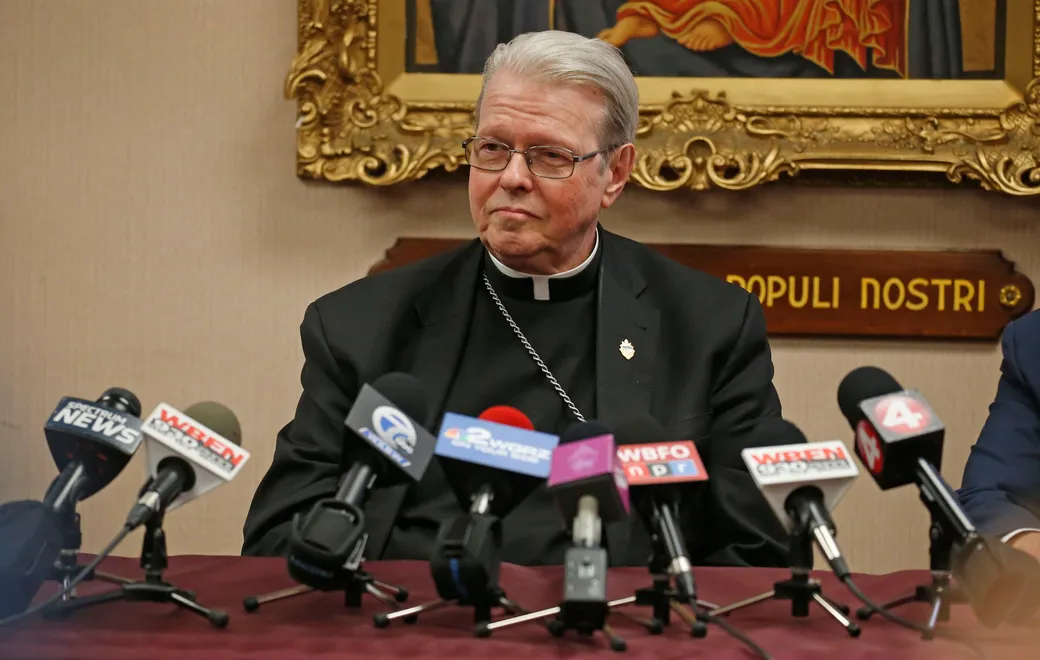Buffalo Diocese Legal Bill in Sex Abuse Scandal: $2 Million and Counting
By Phil Fairbanks
The Buffalo Diocese is spending a lot of money defending itself. Hundreds of clergy sexual abuse lawsuits. A landmark bankruptcy case. The result is a legal bill totaling more than $2 million the past year alone. And the meter is running. More than half of the money paid out by the diocese $1.4 million went to Connors LLP, the Buffalo law firm handling more than 260 Child Victims Act lawsuits against the diocese. Headed by Terrence M. Connors, one of the state's preeminent defense attorneys, the firm has represented the diocese for years and is seen as one of its primary defenders, both in court and in public. Detailed in a new bankruptcy filing, the legal fees also show Bond, Schoeneck and King, the law firm overseeing the diocese's bankruptcy case, receiving $685,000 over the past year. That includes a $232,082 retainer in February, after the diocese apparently decided to put the firm on the case permanently. "Last year was unprecedented in the 173-year history of our diocese," Connors said in a statement Wednesday. "Hundreds of new claims surfaced and our lawyers and paralegals spent thousands of hours responding to the claims. Our fees, itemized and billed at substantially reduced rates, reflect our extensive work." Like Connors, the diocese attributed the seven-figure legal fees to the hundreds of civil lawsuits now confronting the church. "Prior to filing for Chapter 11, these expenses were necessary and unavoidable," diocese spokesman Greg Tucker said in a statement. The payments to Connors and Bond, Schoeneck and King are detailed in a financial report submitted Friday to U.S. Bankruptcy Court. The diocese is not alone in seeking the help of a prominent law firm. In a separate filing last week, a committee of creditors, all of them alleged victims, asked the court to approve the hiring of James I. Stang of the Los Angeles firm Pachulski Stang Ziehl & Jones. The firm, which has represented creditor committees in more than a dozen other bankruptcy cases involving Catholic dioceses, is seeking up to $700 an hour for its attorneys, a figure it describes as substantially below its regular hourly rates. The diocese filed for bankruptcy in February and, among other things, cited the hundreds of clergy sexual abuse lawsuits it faced and their likely impact on the church. The diocese also pointed to a dramatic decline in donations from parishioners because of the sexual abuse scandal. In the latest statement, the diocese reported that its annual income 18 months ago from September 2017 to September 2018 was $18.1 million. After the scandal erupted in early 2018, the church's income fell to $13.1 million the following year. This year, the diocese reports taking in $7 million, with half of the year still to go. In its initial bankruptcy petition, the diocese listed assets of $10 million to $50 million and liabilities of $50 million to $100 million. It also reported having between 200 and 999 creditors, most of them individuals now suing the church over clergy sexual abuse allegations. The church insists its bankruptcy filing is not an attempt to avoid those lawsuits or its obligations to victims and said it believes the court case will ensure that a larger number of survivors receive compensation. The diocese also sees the bankruptcy petition as the best way to continue its mission while addressing the lawsuits. "Among the stated objectives of the diocese in pursuing Chapter 11 is to avoid the significant delay and expense associated with protracted litigation in state court and to ensure a more equitable resolution for all victim-survivors," Tucker said Wednesday. Well before it filed for a court-supervised reorganization, the diocese paid out $17.5 million to 106 victims under a voluntary compensation program. The cash offers ranged from a low of $2,000 to a high of $650,000 and required the victims to forfeit their right to sue. The civil lawsuits still pending against the diocese, more than 260 at last count, stem from the Child Victims Act's one-year window for the filing of suits previously time-barred by the state. Buffalo Diocese officials expect the number will climb to 400 by the time the window is closed. Even though some of those suits already have trial dates in state court, the diocese's bankruptcy filing puts all of the abuse cases on hold. It also means U.S. Bankruptcy Judge Carl L. Bucki and U.S. Trustee William K. Harrington will play a significant role in deciding which cases are settled and how much compensation victims receive. One of Harrington's first acts was to form a creditors' committee made up of alleged victims to help investigate the diocese's finances and come up with a settlement. Theres a huge responsibility on this committee, Richard Brownell, a Springville resident appointed to the committee, told The Buffalo News last month. Im hoping that my insights can contribute to the bottom line of making sure the diocese is doing the right thing." While the diocese sees the bankruptcy case as the fairest way to settle its claims, childhood victims see it as a way for the church to minimize the abuse they suffered and continue the cover-up that allowed it to remain secret for decades.
|
.
Any original material on these pages is copyright © BishopAccountability.org 2004. Reproduce freely with attribution.
